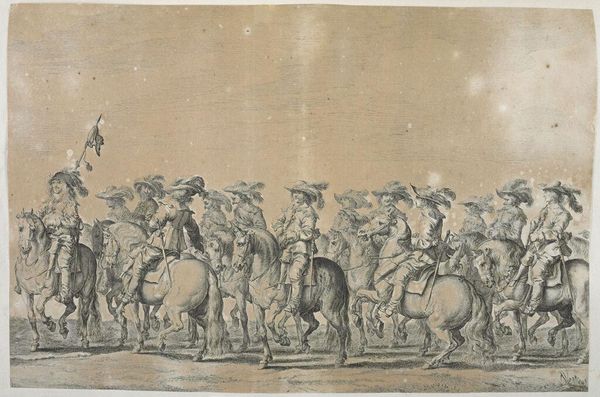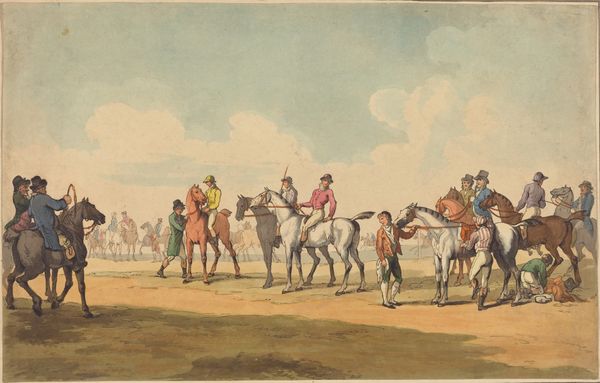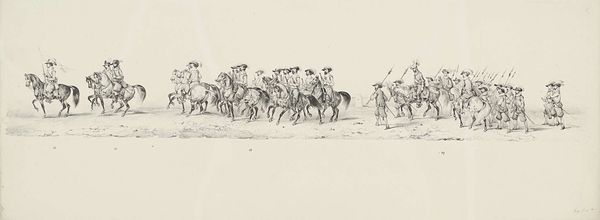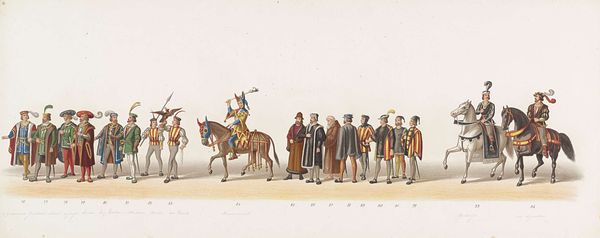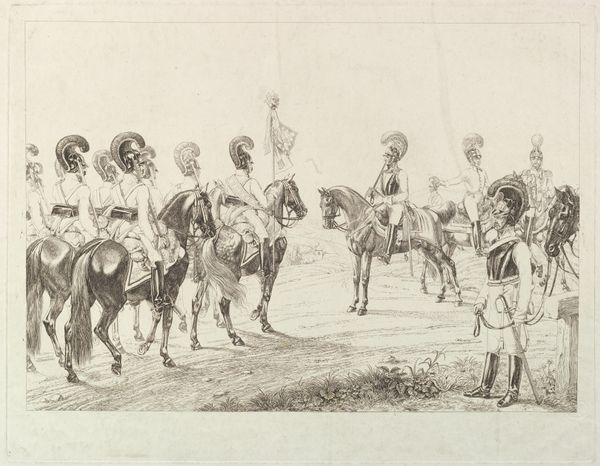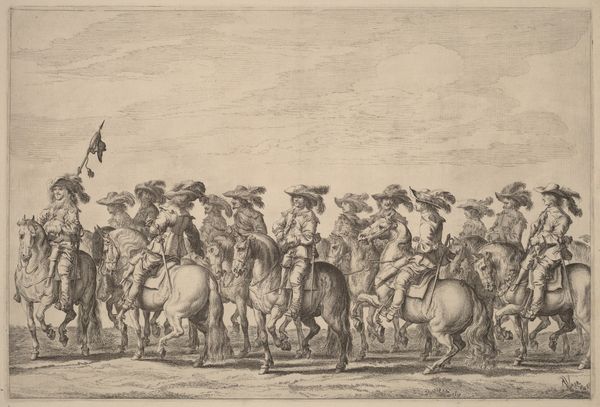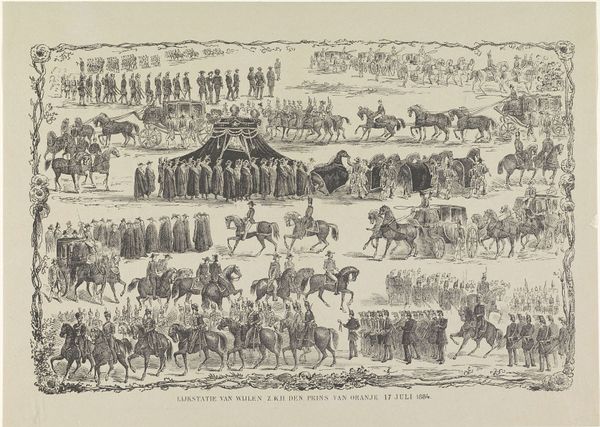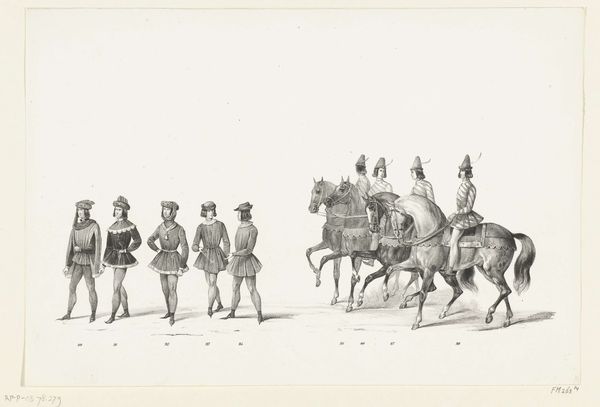
Vijfde groep in de optocht bij de viering van het 25-jarig regeringsjubileum van koning Willem III te Amsterdam, 1874 1874
0:00
0:00
drawing, paper, ink
#
drawing
#
narrative-art
#
dutch-golden-age
#
paper
#
ink
#
group-portraits
#
architecture drawing
#
genre-painting
#
history-painting
#
academic-art
#
realism
Dimensions: height 234 mm, width 874 mm
Copyright: Rijks Museum: Open Domain
Curator: This ink and paper drawing captures the atmosphere of Amsterdam in 1874. The artwork, titled "Fifth Group in the Procession Celebrating the 25th Anniversary of the Reign of King William III in Amsterdam, 1874," offers a slice of life from a specific historical moment, though the artist, sadly, remains anonymous. Editor: My eye is drawn to the procession, meticulously rendered, fading into the distance, a study in contrasts between the opulence of the equestrian figures at the front, and then morphing into crowds of land-bound common folk further back. Curator: That contrast is deliberate. The procession itself was a carefully constructed piece of political theatre. Each group represented different aspects of Dutch society, emphasizing the unity and prosperity ostensibly brought about under Willem III's rule. Editor: But what about those figures in between, scantily clad, their skin markedly different? They feel like symbolic representations rather than portraits, their presence hinting at the reach of Dutch colonialism and its inherent power dynamics. Curator: Exactly. Consider the time period. Dutch society was grappling with its colonial past, even as it celebrated the monarchy. Representations of colonial subjects, often stereotyped, were common in these displays, serving to reinforce existing social hierarchies and justify colonial expansion. Editor: I see how the inclusion of these figures could underscore the idea of Dutch dominance and wealth derived from its colonies, parading it all for national pride. It brings to mind questions of cultural memory, of how we choose to remember, and what symbols persist to carry the weight of history. Curator: These processions were heavily influenced by the elite. Wealthy merchants funded elaborate floats. Local guilds marched displaying their trades. It all solidified public loyalty, but in doing so reinforced the prevailing class structures in Dutch society at the time. Editor: Even today the symbols that resonate most are the ones we have to really examine. Thanks for untangling those fascinating contradictions woven into this drawing, and making clear who’s holding the brush, or in this case, the ink. Curator: Indeed. Understanding the social context allows us to appreciate the narrative on multiple levels, to see it not just as a record of celebration but as a statement of power.
Comments
No comments
Be the first to comment and join the conversation on the ultimate creative platform.


